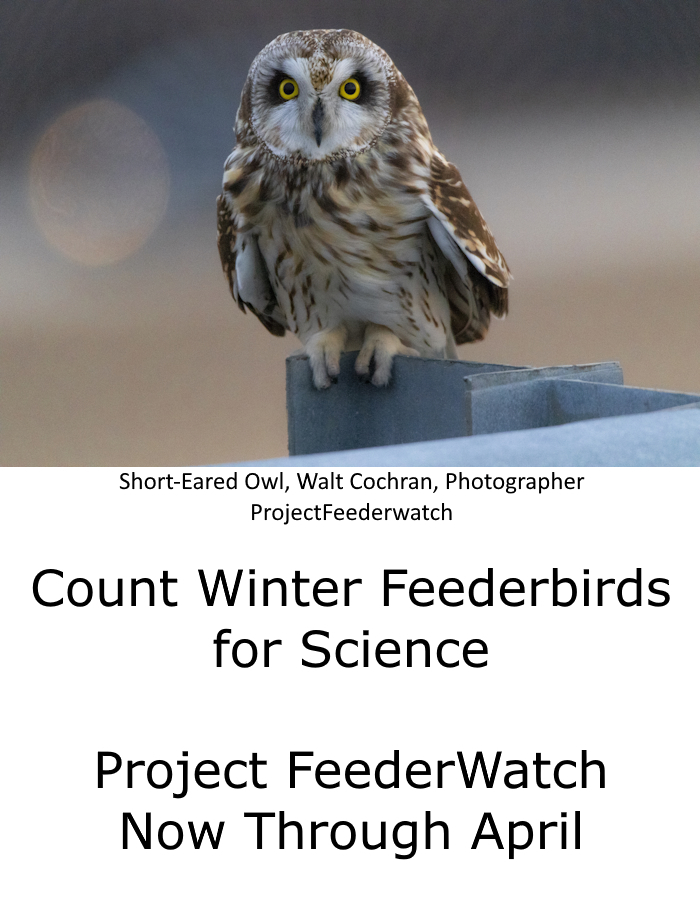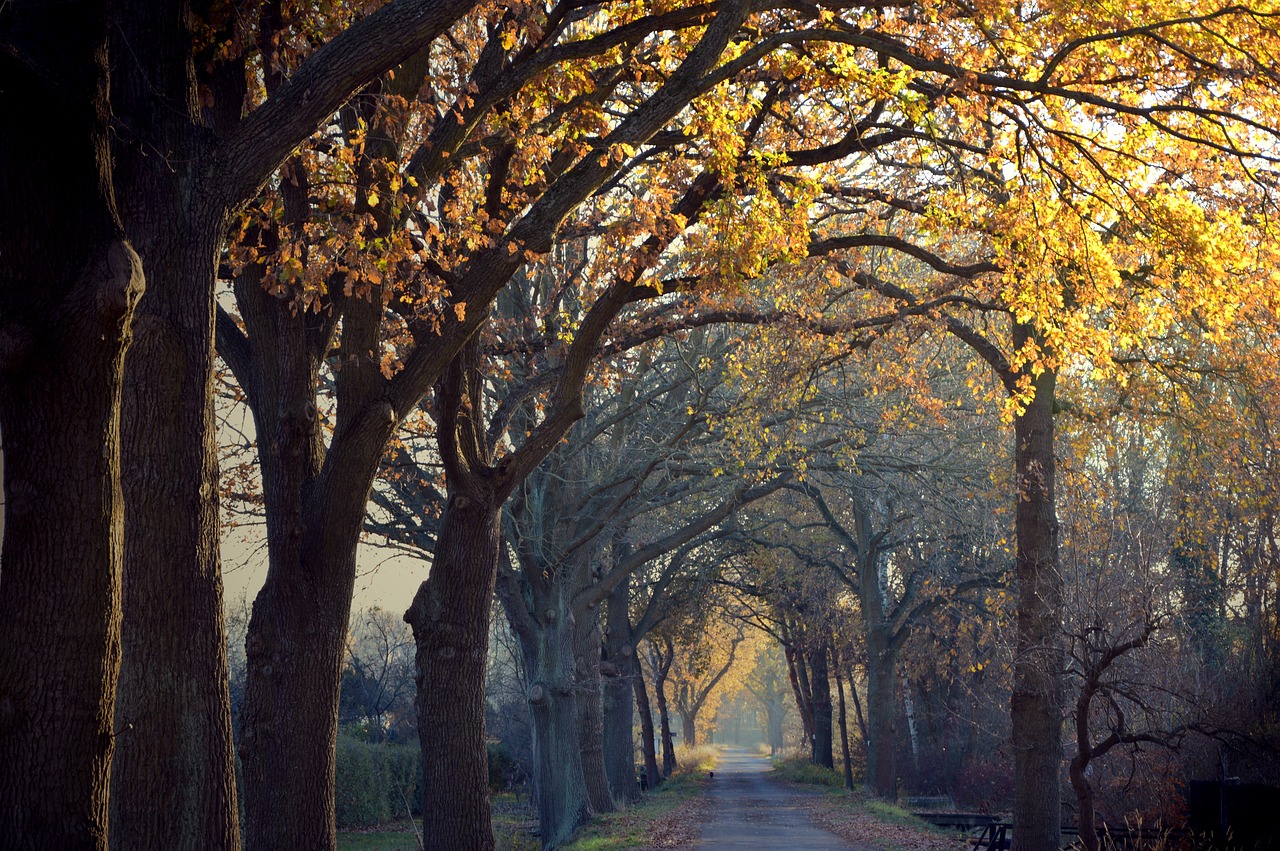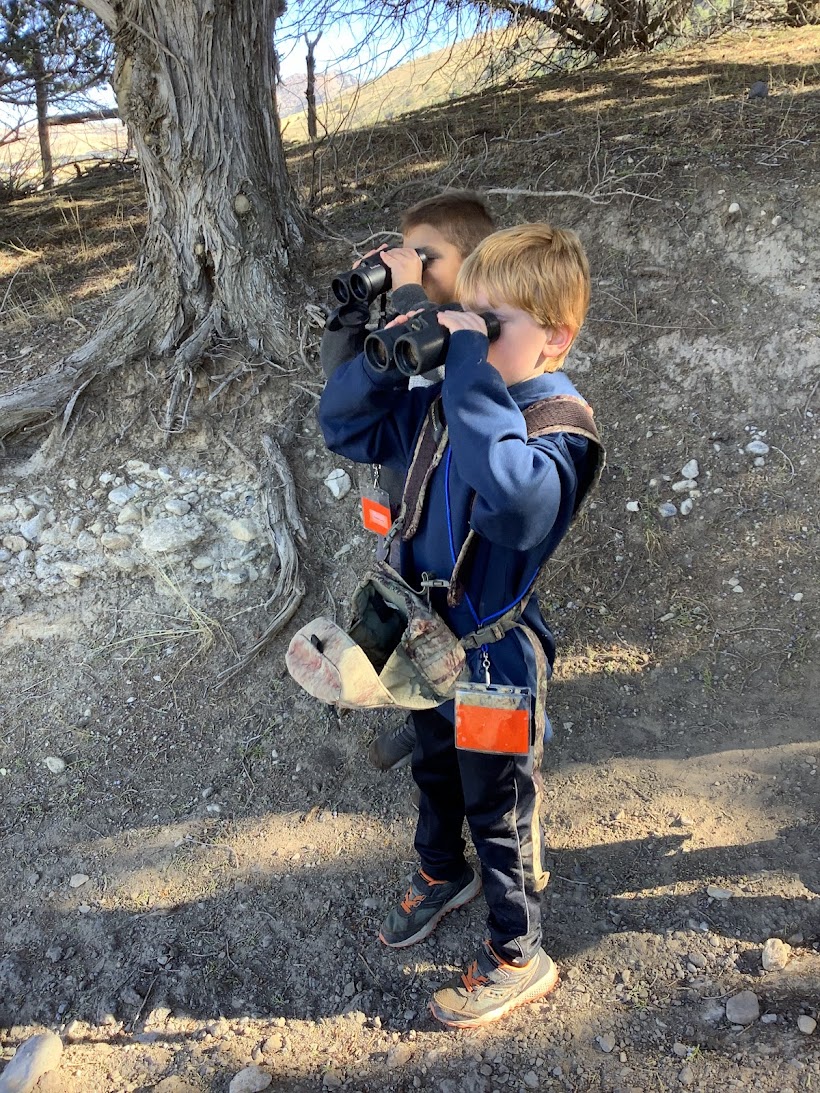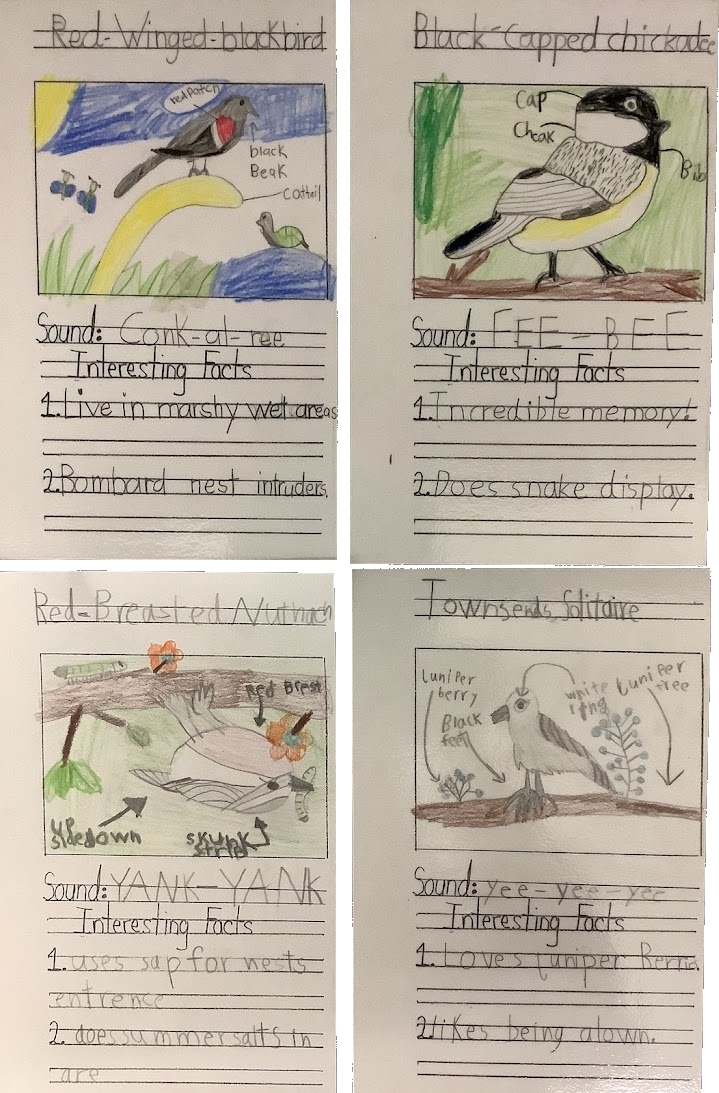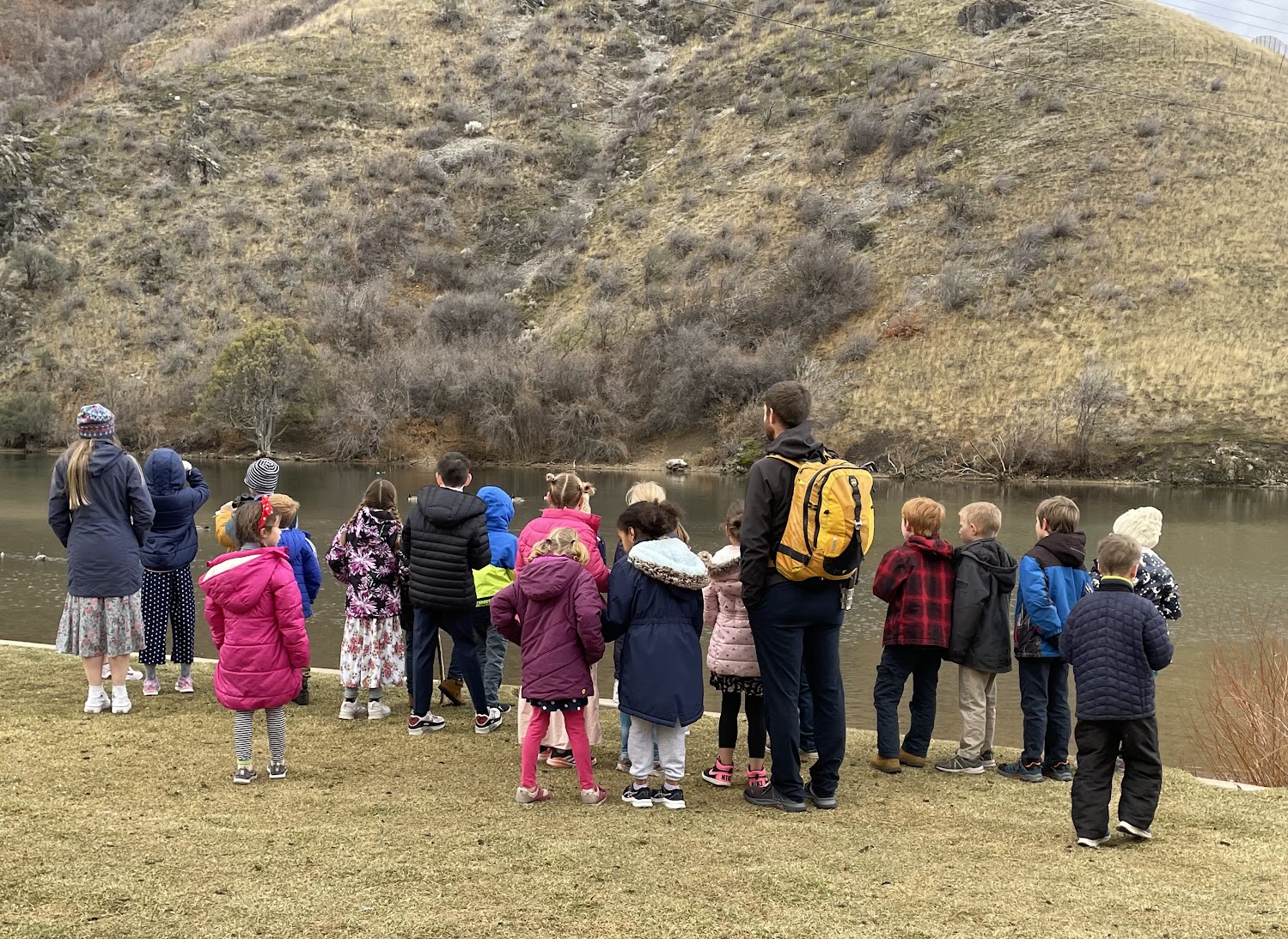
Courtesy & Copyright Joseph Kozlowski, Photographer
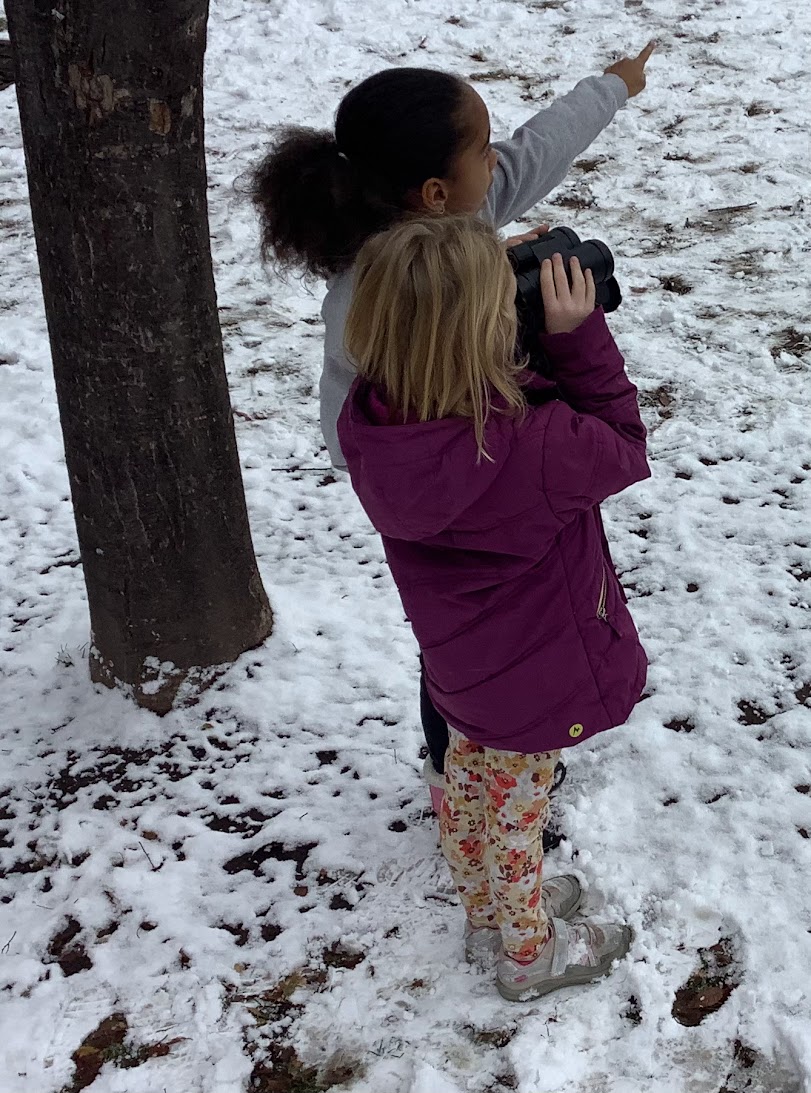 Using Binoculars to Look for Ducks
Using Binoculars to Look for Ducks
Courtesy & Copyright Joseph Kozlowski, Photographer
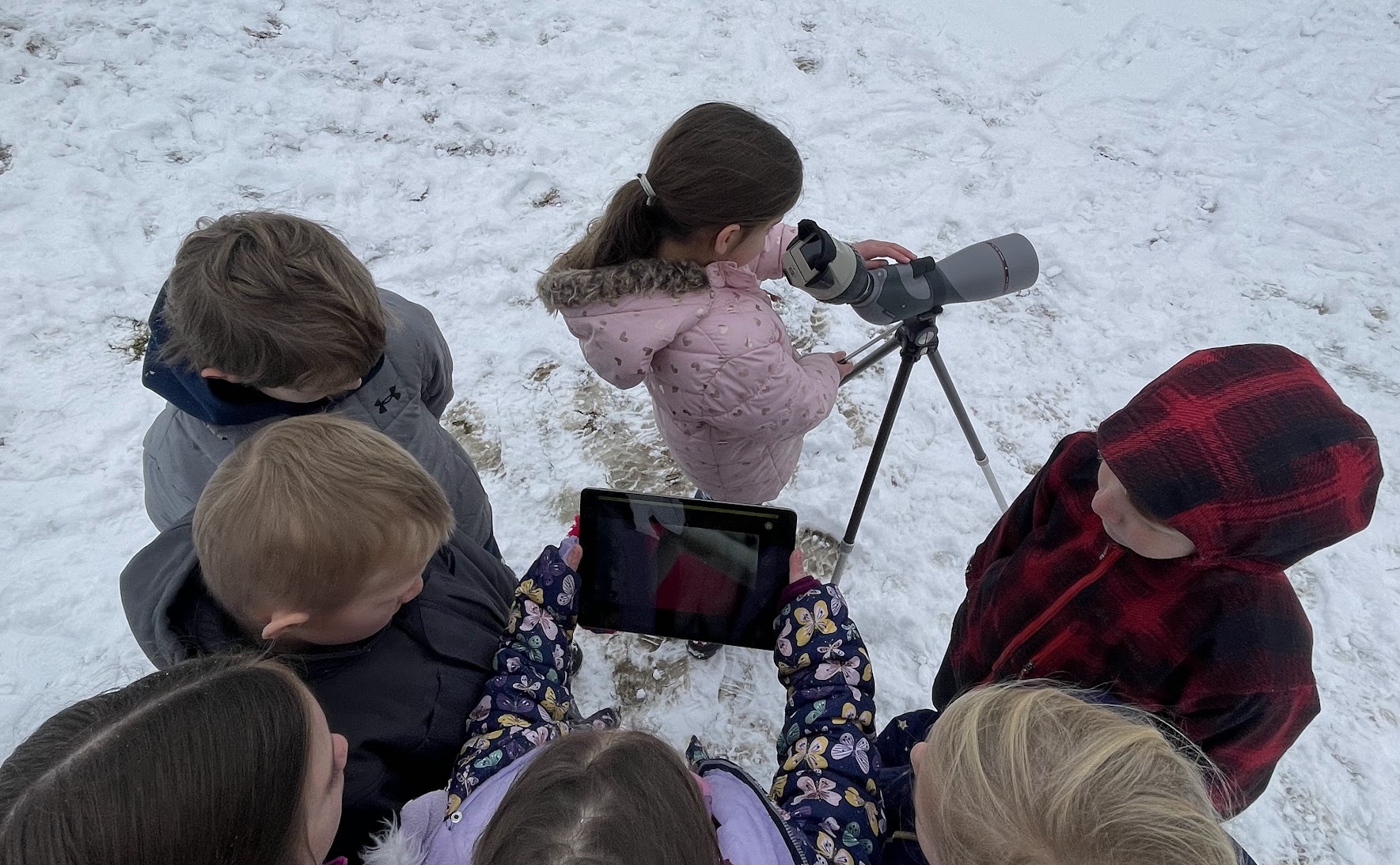 Spotting Scope with Image Transmitter
Spotting Scope with Image Transmitter
Courtesy & Copyright Joseph Kozlowski, PhotographerOne aspect of experiential learning I love most is how it turns mundane encounters into magical experiences. How many times have your children walked by a pond full of ducks and geese without batting an eye, or shuffled their feet through fallen, Autumn leaves on their way to this or to that? I continue to be astonished by how much there is to appreciate and to learn from our surroundings, but we lend it a bit of our attention and wonder. It’s amazing to see how just a little preparatory investigation can turn fleeting everyday moments into lifelong learning memories.
My 2nd-grade class focuses on learning about birds. I don’t just mean we read a few books and discuss the basics of birds. I mean my students can replicate the sounds of at least 15 local birds, provide detailed descriptions of their body characteristics, and even provide information about their diet, habits, and behaviors. We’ve studied birds all year long, partnered with local bird organizations – Bridgerland Audubon Society, Bear River Migratory Bird Refuge –, been on numerous birding outings, and let’s just say are ALL IN on birding.
With the recent weather systems and cold fronts in Northern Utah, we’ve seen waterfowl migrations come alive; a perfect time to study that classification of birds with my students! Little did I, or my students, realize there was so much to learn about common waterfowl! Did you know some waterfowl dive for food and others dabble? Did you know about preening to keep waterproof, or special down feathers to keep warm? How about your knowledge on a Redhead Duck’s nest parasitism techniques? Well, my students learned about these things, and many more over the span of a few weeks. As a culminating event, we planned a field experience to Logan’s 1st Dam, a local and vibrantly busy park, which surrounds a small reservoir, and is about a 45-minute walk from our school’s front door. Many of my students have been to this park numerous times throughout their lives with their families. Needless to say, there is nothing novel about this location.
Armed with binoculars leant by the Bear River Migratory Bird Refuge, and a spotting scope with an image transmitter granted us by Bridgerland Audubon Society, students began to observe, count, and be astonished by what they saw. It was as if the students had never seen a Canada Goose or Mallard duck in their lives. Their background knowledge on these birds brought to life the mundane place they were experiencing, as kids shouted “Look, it’s dabbling!” or “I saw 15 drakes and 19 hens, that’s 34 total!” or “I bet that Redhead is trying to find someone else’s nest to lay her eggs!” The point here is that, with proper prior investigation and attention to details of place, a mundane park can become a treasured location for observing, questioning, and astonishment. What are some mundane experiences around you that could become inspiring and magical learning opportunities?
This is Dr. Joseph Kozlowski, and I am Wild about Outdoor Education in Utah!
Credits:
Images: Courtesy & Copyright Joseph Kozlowski, Photographer, Used by Permission
Featured Audio: Courtesy & Copyright © Kevin Colver, https://wildstore.wildsanctuary.com/collections/special-collections/kevin-colver
Text: Joseph Kozlowski, Edith Bowen Laboratory School, Utah State University https://edithbowen.usu.edu/
Additional Reading Links: Joseph Kozlowski & Lyle Bingham
Additional Reading:
Joseph (Joey) Kozlowski’s pieces on Wild About Utah:
Rosenberg, Ken, Choosing a Spotting Scope, All About Birds, Cornell Lab of Ornithology, 2008, https://www.allaboutbirds.org/news/scope-quest-2008-our-review-of-spotting-scopes/?pid=1039
How To Choose Binoculars: Our Testing Tips, All About Birds, Cornell Lab of Ornithology, Updated December 4, 2022, https://www.allaboutbirds.org/news/six-steps-to-choosing-a-pair-of-binoculars-youll-love/
Free K-12 Lessons Open Doors for Kids to Explore Nature and Science, Cornell Lab Annual Report 2023, Cornell Lab of Ornithology, Updated December 4, 2022, https://www.birds.cornell.edu/home/free-k-12-lessons-open-doors-for-kids-to-explore-nature-and-science/




